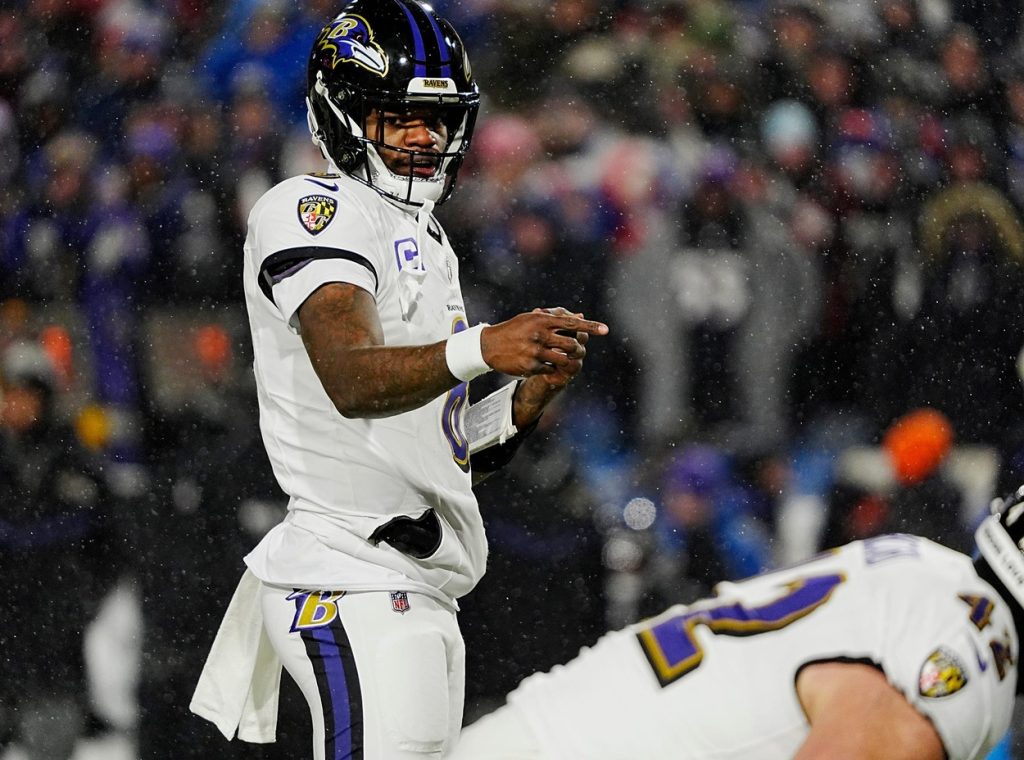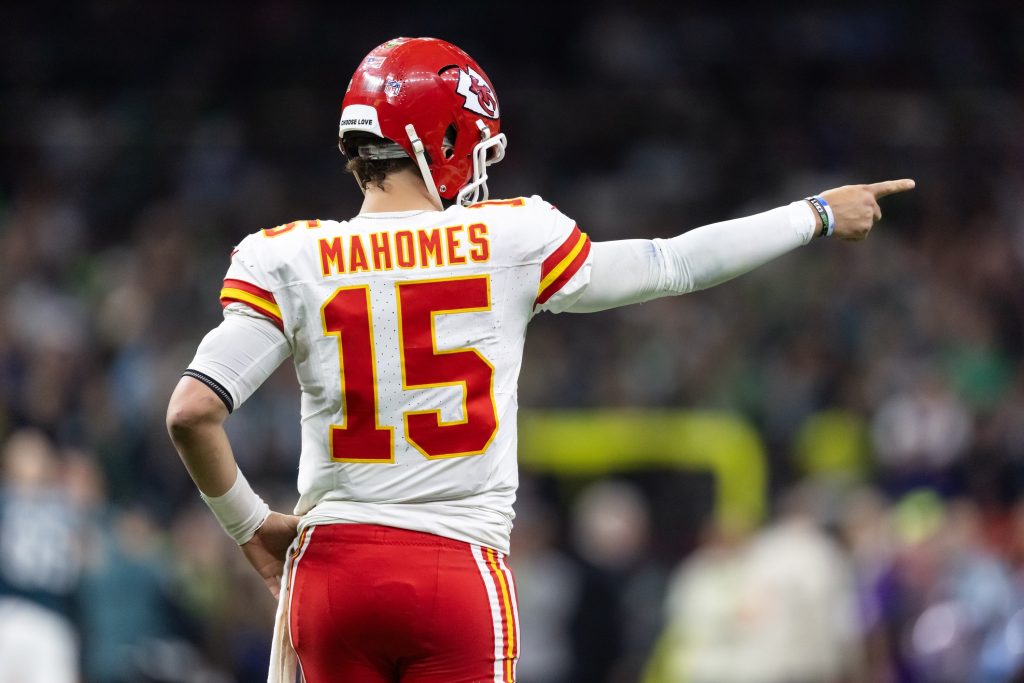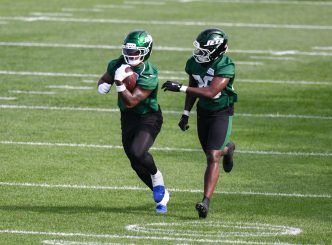Lamar Jackson’s case to be considered the NFL’s No. 1 quarterback is compelling, built on his unparalleled dual-threat dominance, historic 2024 season, and two MVP awards, but it faces a steep challenge from Patrick Mahomes’ unmatched winning pedigree. As one of the consensus top-tier QBs alongside Mahomes, Josh Allen, and Joe Burrow, Jackson’s 2024 performance—4,172 passing yards, 41 TDs, four INTs, and 821 rushing yards—has thrust him into the QB1 conversation. While some, like TWSN’s rankings, place him third behind Mahomes and Allen, his growth as a passer and game-changing rushing ability make a strong argument for the top spot. Let’s evaluate Jackson’s case, his evolution, and why he falls just short of Mahomes in the race for QB1.
Jackson’s greatness is undeniable. In 2024, he led the NFL in yards per pass attempt (8.7) and yards per carry (5.8) among QBs, a rare dual feat showcasing his efficiency, per Pro Football Reference. His 41:4 TD-to-INT ratio ranked first, and he topped QBs in passer rating (121.6), QBR (80.1), touchdown rate (8.9%), and EPA on passing plays (0.22), per ESPN Stats & Info. Under pressure, Jackson was elite, posting a 104.7 passer rating and 10 TDs, per Next Gen Stats, as highlighted by analyst Theo Ash. His 4,172 yards and 41 TDs came on just 459 attempts (16th), underscoring his explosiveness. Add 821 rushing yards and four rushing TDs, and Jackson’s 5,993 total yards (3rd in the NFL) made him a one-man wrecking crew for Baltimore’s 12-5 season, which ended in an AFC Championship loss to Kansas City.
His evolution as a passer is the crux of his QB1 case. Early in his career (2018-21), Jackson was a rushing savant—3,762 yards, 7.1 per carry, 21 TDs—but his passing lagged, surpassing 3,000 yards only once (3,127 in 2019). Critics, including ESPN’s Mel Kiper in 2018, questioned his arm, citing a 57.0% completion rate at Louisville. By 2024, Jackson silenced doubters, completing 67.2% of passes with a 9.1% TD rate (1st) and 0.9% INT rate (2nd). His 2023 season (3,678 yards, 24 TDs, 7.5 YPA) hinted at growth, but 2024’s leap—leading in EPA per dropback (0.28) and adjusted yards per attempt (9.8)—cemented him as an elite passer. Clips from 2019, his first MVP year, show his rushing wizardry (1,206 yards, 7 TDs), but 2024’s pocket poise, like a 71-yard TD to Zay Flowers against Pittsburgh, proves he’s no one-trick pony.
Jackson’s rushing remains his superpower. His 5,876 career rushing yards (7.0 per carry) are the most by a QB through seven seasons, per NFL Research, and his 29 runs of 20-plus yards since 2018 lead all players. This forces defenses to account for him, opening passing lanes—his 12.1 yards per completion in 2024 ranked 4th. Baltimore’s offense, 2nd in EPA per play (0.18) and 4th in points (28.9 per game), leaned on his 1.9 WAR (5th among QBs, per PFF). His 2019 and 2023 MVPs, plus a near-miss in 2024 (2nd to Mahomes), make him a perennial contender, with 104.7 regular-season wins above replacement since 2018 (2nd to Mahomes’ 112.3).

The knock on Jackson is his playoff record: 3-5 with one AFC Championship appearance (2024). His 58.1% postseason completion rate and 6.3 YPA pale next to his 66.7% and 7.9 regular-season marks, and Baltimore’s 17.6 points per game in his playoff starts lag Mahomes’ 28.9. Losses like 2024’s 27-10 to Kansas City, where he threw for 272 yards but had a costly INT, fuel criticism. However, context matters—Baltimore’s 2024 playoff run faced a Chiefs defense allowing 15.8 points per game, and Jackson’s 1.7 EPA per play in the divisional win over Houston was tops among QBs. Reducing his career to eight playoff games ignores his 45-24 regular-season record and 68.1% win rate since 2019.
So, why isn’t Jackson QB1? Mahomes’ three Super Bowl MVPs, 76-22 record, and 6-3 postseason mark since 2018 set an unmatched standard. In 2024, Mahomes threw for 4,183 yards, 38 TDs, and 7 INTs, leading Kansas City to a 14-3 record and a third straight title, per NFL.com. His 0.29 EPA per dropback edged Jackson’s 0.28, and his 11.9 yards per completion under pressure topped all QBs. Mahomes’ clutch plays—like a 44-yard OT dart to Travis Kelce in Super Bowl LVIII—give him an edge in high-stakes moments. Allen’s 4,306 yards and 42 total TDs in 2024, plus a 5-5 playoff record, keep him in the mix, but his 14 INTs and 3-4 one-score game record trail Jackson’s 4 INTs and 6-2. Burrow’s 4,475 yards and 7-4 playoff mark are close, but injuries (10 missed games since 2022) ding his case.
Jackson’s 2024 was arguably better statistically—41:4 TD-to-INT ratio, 8.7 YPA, and 5.8 YPC trump Mahomes’ 38:7 and 7.8 YPA—but Mahomes’ 14-3 record and 3-0 playoff run outweigh Jackson’s 12-5 and 1-1. Jackson’s 2.1% INT rate (2nd) and 8.9% TD rate (1st) scream efficiency, but Mahomes’ 6.7 WAR (1st) and 73.3% win rate edge Jackson’s 5.8 WAR and 70.6%. The gap is razor-thin—Jackson’s 1,641 rushing yards since 2023 (1st among QBs) and 121.6 passer rating are unrivaled—but Mahomes’ rings and 11-2 record in elimination games seal his QB1 status.

Could Jackson overtake him? Absolutely. At 28, Jackson’s prime aligns with Baltimore’s loaded roster—Zay Flowers (1,104 yards), Mark Andrews (45 catches), and Derrick Henry (1,325 rushing yards) in 2024. If he leads the Ravens to a Super Bowl, his 3-5 playoff mark becomes a footnote. For now, he’s a close No. 2, with a case stronger than Allen (turnovers) or Burrow (health). His dual-threat mastery—5,993 total yards, 45 TDs in 2024—makes him a defensive nightmare, and his passing leap (9.8 AY/A) closes the gap. Mahomes wins for winning, but Jackson’s not far behind. The QB1 crown is in sight—just one playoff run away.








